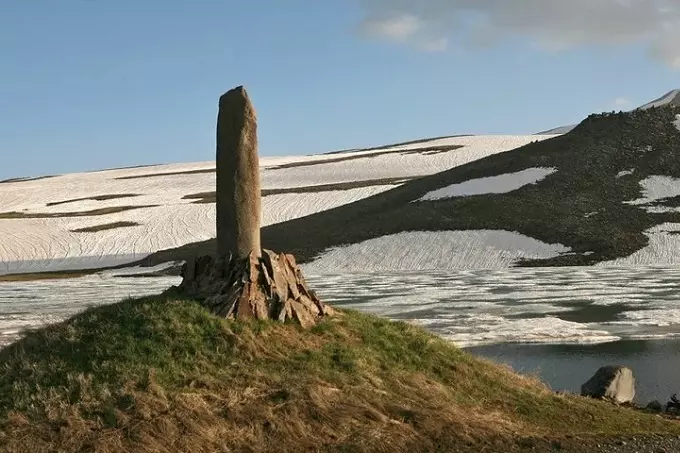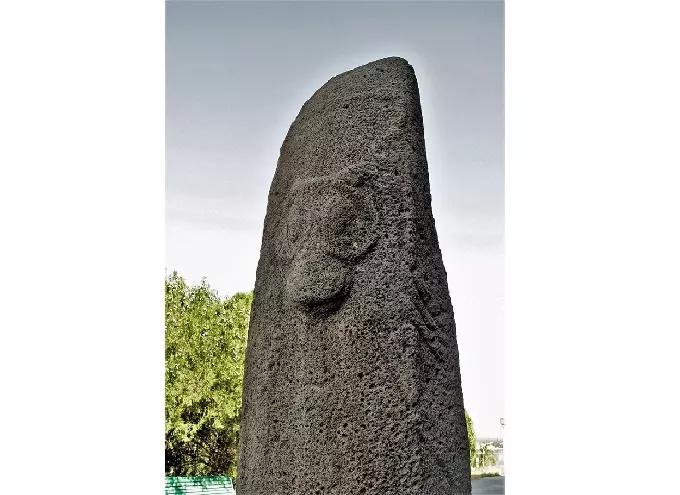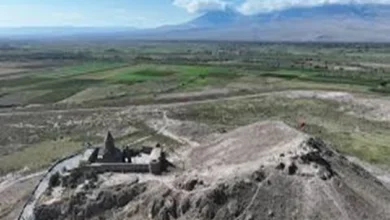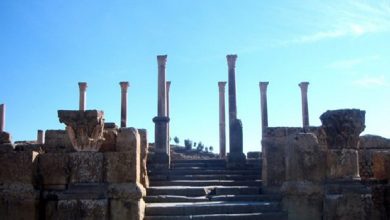Mystery of Vishapakar: what do mystical dragon-stones of ancient Armenia testify to?

An absolutely unique phenomenon, Vishapakar, which can be found only on the territory of historical Armenia, has not yet received an unambiguous interpretation. The stone steles made in the form of a fish can mean much more than what we know about them…
Along with khachkars, which are stone steles with a carved depiction of a cross, Vishapakars (dragon-stones) or simply vishaps are found only in those regions where Armenians have lived or are living. However, unlike khachkars – whose meaning, significance, and time of origin are well known, Vishapakars still conceal many mysteries…
Where did the “dragons” live?
Armen Petrosyan, a senior researcher at the Institute of Archaeology and Ethnography, Doctor of Philological Sciences, considers these steles an absolutely unique phenomenon in world archaeology and culture of the ancient world. “There is no such thing anywhere else. Thanks to these monuments, we can outline the mythological ideas of the ancients and their objects of worship,” the scientist said.

Vishapakars are made of a solid piece of stone, often in the shape of fish, with ornaments of snakes, bulls, and sometimes rams or birds. Some of them are more than five meters long. As a rule, the megaliths were set high in the mountains, often at the shores of lakes, at the sources of rivers.
Large concentrations of “dragon-stones” can be found on the territory of contemporary Armenia, particularly on the Geghama Ridge (near the western shore of Lake Sevan), and on the slopes of Mount Aragats, at an altitude of over two and a half thousand meters. In addition, they occur in the Armenian-populated Javakhk region of Georgia and in the Tayk province of Western Armenia (now the territory of Turkey).
Altogether about 150 Vishapakars are known, and the vast majority were found in modern Armenia. According to recent studies, the oldest of them are more than four thousand years old.
Today some of the menhirs are moved to the State Museum of Ethnography and National Liberation Movement of Armenia “Sardarapat” as well as to some parks of Yerevan, so that everyone can see them.
A dragon without wings and fire?
There are many versions of the purpose of Vishaps. According to one of them, they are statues of a mythical dragon blocking the source of water. According to others, the megaliths were dedicated to Astghik, the goddess of love and fertility, or to Ara the Beautiful, the dying and resurrecting character of Armenian mythology. There is also an opinion that in ancient times, they were used as markers to mark the location of underground water sources.
However, according to Armen Petrosyan, Vishapakars clearly demonstrate the connection of Armenian mythology with Indo-European.
“It is generally believed that Armenian mythology was strongly influenced by Persian mythology. Indeed, the Iranian cultural influence extended not only to Armenians but also to other peoples living in the territory from Asia Minor to the interfluves. However, originally the Armenian mythology was related to the Indo-European…”, says the scientist.
The word “Vishap” is translated as “dragon”. But the European dragon is a winged serpent that spews flames. Vishap in Armenian means “big mythical fish or serpent. In addition, menhirs are also called “azhdakh”, after a character from Iranian mythology, Azhi Dahak.

The scholar associates this image with the mythological Serpent – the antagonist of the Thunderer, that is, the god Thunderer. It is worth recalling that the confrontation of the Thunderer with the Serpent is one of the central plots of Indo-European mythology.
“The fact is that the root of the name serpent-demon is *wel-, the same root in the Armenian language developed into գեղ- “gegh-”. Such names as Geghama (the ancient name of Lake Sevan – Ed.), Geghama Ridge, and Gegharkunik originate from it. And it is here, on the Geghama Ridge, that the largest number of Vishapakars, around 60, can be found. And their largest clusters are on Mount Gegh and near the Geghi fortress. This means that originally these steles were called “gegh”, and the Iranian “vishap” came much later,” says Petrosyan.
The scientist argues that this fact is clear evidence that the Armenian tradition has preserved traces of the original Armenian – Indo-European mythology. That is, Vishapakar, which long before the influence of the Iranian culture was called not other than “gegh” and meant the mythical Serpent is the best proof of the Indo-European elements in the Armenian mythology.
In confirmation of his words, Petrosyan cites the fact that in the folklore traditions of many peoples, including Armenians, Hittites, and Scandinavians, the antagonist of the Thunderer – the Serpent, was depicted in the form of a huge fish. Another reference to the main plot of Indo-European mythology are images of the head of the bull on Vishapakars, as the bull is a symbol of the god of thunder in the traditions of many peoples of the world, including the Indo-European tradition.




